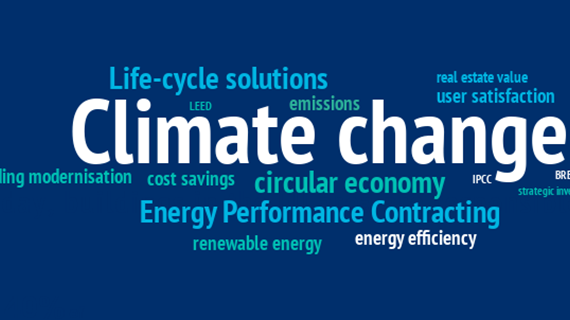 Caverion
Caverion
Why should maintenance be taken into account already at the concept stage?
This article was originally posted on Caverion Finland's blog by Ville Tamminen.
A poorly planned property maintenance can account for up to 80% of the total cost of the building life cycle. With good design and maintenance, building life cycle costs can be reduced to as low as 50-60%, including investment costs. Adding the potential loss in the value of the property increases the role of maintenance in costs. After all, maintenance plays an important role in ensuring decent air conditioning in the summer time and pleasant working conditions long after taking the building into use.
The owner, the constructor and the users are usually happy with the newly completed building because the conditions are exactly as desired: enough space and light and good air quality. Also the users’ desirable functionalities may have been successfully implemented. At best, the premises have even been completed on budget - the construction budget.
But how can we ensure that the conditions and functionalities of the property are maintained during the next few decades without constantly exceeding costs? How can a life cycle long budget be assured?
The solution is to include maintenance planning in the concept planning stage of the property. In this scenario, the technical solutions and the required maintenance level can be scaled and budgeted correctly in relation to the desired conditions and functionalities. At the same time, it is possible to budget the entire maintenance phase of the property, including technical improvements, for years to come. Thus, the annual costs are precisely defined, and when the money for repairs is already booked, measures will also be accomplished without accumulating the repair debt.
With managed life cycle longer warranties become more common
There is often a gap between concept planning, construction and maintenance work, as construction and engineering companies rarely carry responsibility for the maintenance. On the other hand, maintenance companies are usually not involved in the planning phase. Thus, buildings are mainly granted very short warranties. When also maintenance is taken into account right from the start, warranty can be granted for up to ten years.
The role of maintenance is already considered more closely in the public needs than in the private sector. When municipalities got tired of indoor air problems and budget scams, the managed life cycle concept was developed. In a life cycle service model, the supplier responsible for the property maintenance guarantees the same building conditions for the next 20-25 years. The service provider has a wide responsibility in the concept. For example, with the Kuntolaakso recreation centre in Kuopio, Finland, Caverion's responsibility for the conditions extends all the way to the condition of ice in the ice rink.
The construction industry is slow at reforming, but the future looks promising. Even if private operators find it harder to commit their funds for decades ahead, the managed life cycle concept is gradually becoming more common also on the private side. Property owners, which build premises for their own use, are pioneers of change as they know their needs in the long run. With the correct concept planning, a 10-year warranty of conditions, costs, and maintenance can easily be granted for these buildings.
Planned and preventive maintenance improves property value
By renewing contract models, property maintenance can be taken into account already at the concept planning stage. In the future, time frames will not be defined only for the construction of foundations, walls and ceilings, but also for the condition level and functions of the building to be fulfilled during the next decades.
In practice, responsibility for the conditions and, for example, energy consumption is imposed from the owner to the service provider. Certain conditions must be set for the building as a standard quality requirement, which should correspond to the intended utilisation rate and plan. In addition, an agreed technical residual value is determined for the building. The building will still be in good technical condition at the end of the contract period, depending on the agreement.
Even surprising and sudden costs will be avoided when long-term measures and costs have already been specified. When the building is in good condition and all maintenance costs are clear, the value of the property may score much better with the sales position. Caverion has often been thanked for the good work in technical Due Diligence inspections and well-organised technical maintenance to improve the value of the building.
It is possible to get a guarantee for the total costs of the building life cycle. The question is mainly whether to break the old way of thinking and constructing.


